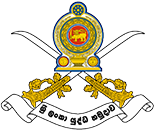The Bureau of the Commissioner General of Rehabilitation and Reintegration (BCGR), responsible for rehabilitation of former LTTE combatants at Protective Accommodation and Rehabilitation Centres (PARCs) in the North and East, during an awareness-raising conference on Wednesday (2), spelt out roles the BCGR has so far executed and achieved through its diverse rehabilitation and reintegration programmes targeting initially an estimated total of 11,696 ex-LTTE combatants.
Commissioner General of Rehabilitation Brigadier Sudantha Ranasinghe, during the principal presentation to the gathering on ‘Rehabilitation Process’ outlined how the meticulous task with the support of volunteers and experts in the field, was effectively conducted to disengage, de-radicalize, rehabilitate and reintegrate former combatants to be productive citizens of the country after exposing them to diverse transformation programmes.
“Sri Lanka after stunning the world by defeating terrorism had to develop its own mechanism to face the challenge of rehabilitating those who were forced to surrender and those who voluntarily surrendered. The task of rehabilitation was another way to end the war since a number of components had to be taken into consideration in terms of the protracted nature of the armed conflict. Factors such as distorted history, social grievances, brainwashed psyche, violent behavioural patterns, etc had to be assessed and addressed. We had to profile them at different levels as early as possible considering cases individually since so many escapees moved into cleared areas en masse as the final stage of the humanitarian operation was on”.
“Those in our care were not any longer called ‘former combatants’ but ‘beneficiaries’. To begin with, there had to be a shift of the entire terminology among us. They were not ‘child soldiers’ but ‘our children’. This compassionate approach resonated across all nine PARCs and has finally resulted in the reintegration of 5764 former combatants, comprised of 3649 males and 2115 females to the society. As for 594 children of 12-18 years of age, different strategies had to be adopted since they are our future. Of them, 273 opted to continue their formal education while the remaining 321 selected vocational training education as the choice for their career. Two separate schools are providing those opportunities under ‘Catch-up Education Programme’ and they have been very effective and successful,” the commissioner added.
Maintenance of the remaining 4716 ‘beneficiaries’ in those PARCs costs the government Rs. 73 million per month, excluding the salaries being paid to the employees. Provision of food, electricity and water to those beneficiaries consumes a fair chunk of this cost, the Commissioner General of Rehabilitation Brigadier Sudantha Ranasinghe said. “We still need a lot of support from various sectors.”
One of the most challenging aspects of the process is the difficulty in finding a permanent ‘living’ for those rehabilitated and released rehabilitees as ordinary citizens in society. Those beneficiaries after their transformation from violence to peace-living need public support and understanding since their reintegration and interaction with society and the family depend now purely on economic factors for them to lead a contended life, he said.
Paying a complimentary tribute to the volunteering experts to the BCGR and the International Organization for Migrants (IOM) for their support, Brigadier Ranasinghe pointed out that a total of 157 rehabilitees were qualified to be admitted to universities after sitting the G.C.E. Advanced Level examination as a result of well-coordinated training programmes implemented by the BCGR. Within a matter of 3-4 months of learning, several hundreds passed the G.C.E. Ordinary Level examination, to be on par with any other school in the island. In addition, 53 beneficiaries who were in love with an inmate either at PARCs or a partner outside, were given in marriage at a mass marriage ceremony on 13th June 2010. They were also provided 53 houses at the initial stage but due to various reasons the couples have moved out into their original areas of living on grounds of economic or other family ties, he added.
Resource personnel from the IOM and the BCGR and a few others contributed to the sessions at Galle Face Hotel.

